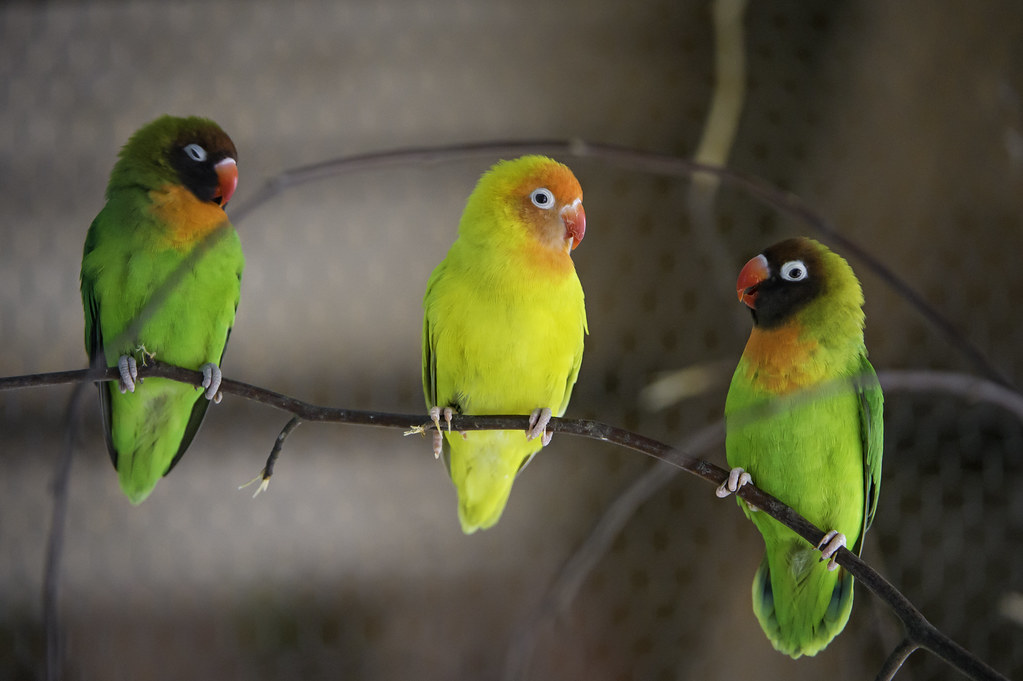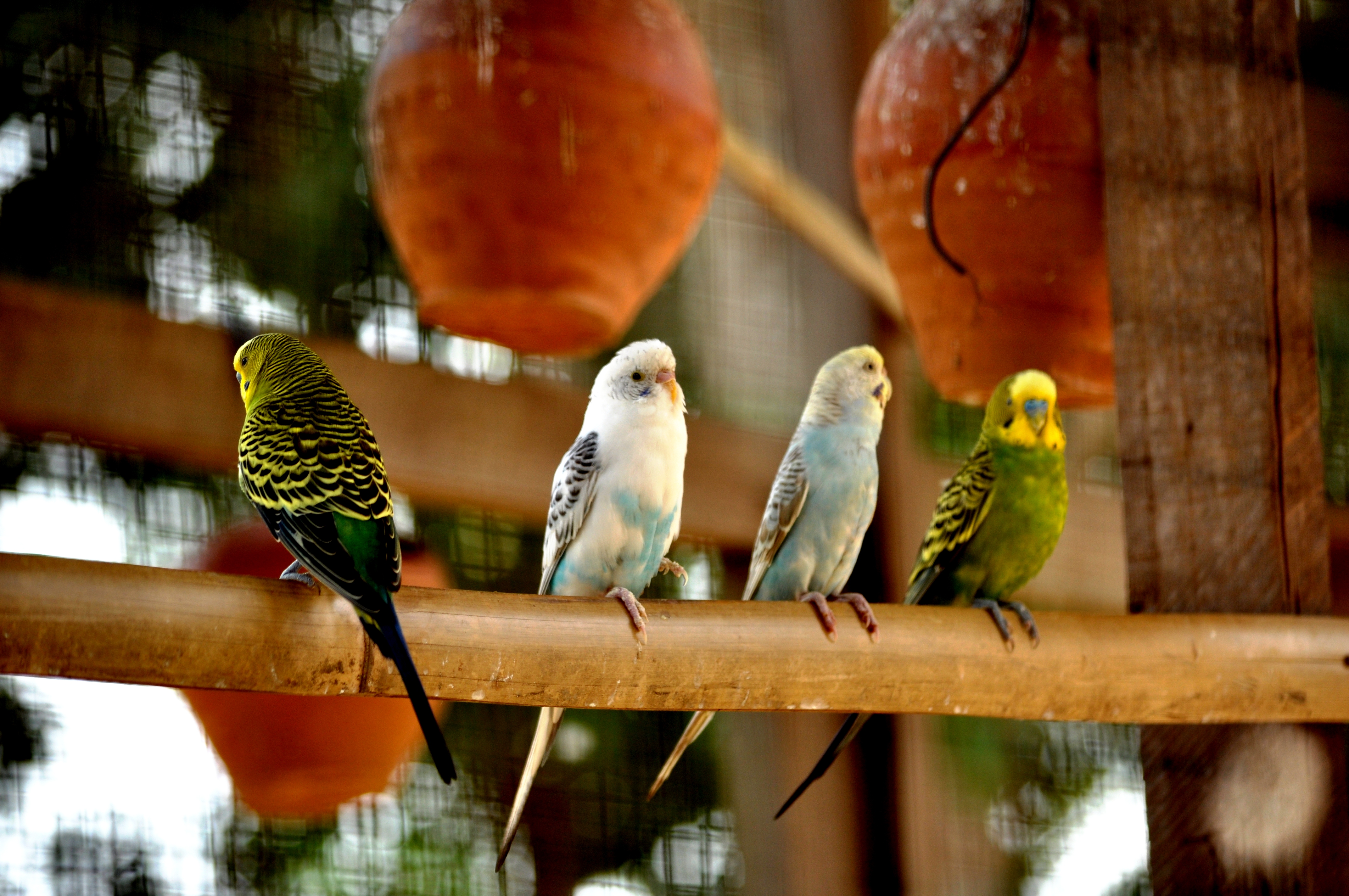Discover the secrets of determining a Lovebird Mysteries effortlessly. From visual cues to expert tips, unravel the mysteries now for a happy bird companion.
Overview of Lovebirds and their Gender Identification
Lovebirds, charming and affectionate companions, have captured the hearts of bird enthusiasts around the world. In this chapter, we embark on an exploration of Lovebirds and the intriguing quest to identify their gender.
Brief Introduction to Lovebirds
Lovebirds, scientifically classified as Agapornis, are small parrots known for their vibrant plumage and social nature. Originating from the African continent, these avian wonders form strong bonds with their mates, exhibiting behaviors that are both fascinating and endearing.
As companions in households, understanding the gender of Lovebirds becomes pivotal. It not only contributes to a deeper connection with these delightful creatures but also plays a crucial role in their overall well-being.
Importance of Knowing the Gender
Why is knowing the gender of your Lovebird so significant? Beyond mere curiosity, it is a key factor in providing tailored care and addressing the specific needs of each bird. Whether you are a seasoned bird owner or a novice, grasping the fundamentals of Lovebird gender identification is essential for fostering a harmonious environment.
From dietary preferences to behavioral patterns, the gender of Lovebirds influences various aspects of their daily lives. A nuanced understanding allows owners to create an environment that supports the natural instincts and tendencies of each bird.
Lovebird Mysteries
The journey to unveil the gender of a Lovebird involves multiple pathways, each with its own set of clues and challenges. This chapter sets the stage for the exploration of these methods, laying the foundation for the subsequent chapters where we delve into behavioral observations, visual cues, and the definitive method of DNA analysis.
Understanding Lovebird Behavior

Dive into the captivating realm of Lovebird behavior, where the subtle nuances between male and female birds come to light. This chapter unravels the intricacies of their natural tendencies, providing a foundational understanding for Lovebird enthusiasts.
Behavioral Differences
Lovebirds, like many other avian species, exhibit distinct behaviors influenced by their gender. Understanding these natural tendencies is crucial for Lovebird owners seeking insights into their feathery companions.
Natural Behaviors of Male Lovebirds
- Vocalizations:
- Male Lovebirds are often more vocal, expressing themselves through a variety of chirps and calls.
- Recognizing and interpreting the pitch and frequency of their vocalizations can offer clues to their gender.
- Territorial Displays:
- Male Lovebirds may display territorial behavior, marking their space with subtle actions like head bobbing and wing fluttering.
- Observing territorial displays helps in identifying gender-specific behaviors.
Natural Behaviors of Female Lovebirds
- Nesting Instincts:
- Female Lovebirds are inclined towards nesting behaviors, showing a particular interest in creating a cozy space.
- Identifying activities like shredding paper or rearranging cage materials can indicate female tendencies.
- Maternal Instincts:
- Female Lovebirds may exhibit maternal behaviors, even in the absence of eggs, by cradling small objects or caring for other birds in the flock.
Observing Nesting Behaviors
Understanding Lovebird nesting behaviors is a key aspect of gender identification. Observing subtle actions such as rearranging cage materials, shredding paper, or exploring confined spaces helps uncover their gender-specific tendencies.
Expert Opinions
Embark on a journey through the insights provided by avian experts who have dedicated their careers to understanding Lovebird behavior. This section explores the nuances highlighted by experts, delving into the behavioral cues that set male and female Lovebirds apart.
Behavioral Cues Provided by Experts
- Dr. Ornithologist’s Perspective:
- Dr. Aviana Featherington emphasizes the significance of vocalization patterns in identifying Lovebird gender.
- Behavioral cues, such as playfulness and interaction preferences, are highlighted as key indicators.
- In-Depth Analysis by Dr. Wingwatcher:
- Dr. Wingwatcher, a renowned ornithologist, provides an in-depth analysis of Lovebird behaviors, offering a comprehensive guide for enthusiasts.
Common Misconceptions and Myths
Separate fact from fiction as we debunk common misconceptions surrounding Lovebird behavior. Understanding these myths is crucial for accurate gender identification, ensuring that bird enthusiasts rely on reliable information.
Visual Identification
Delve into the world of Lovebird gender differentiation through the lens of visual cues. This chapter unveils the intricate physical disparities that set male and female Lovebirds apart, providing enthusiasts with a visual roadmap for accurate gender identification.
Physical Differences
Unravel the distinct external characteristics that mark the gender disparities in Lovebirds. Recognizing these subtle physical traits forms the foundation for a comprehensive understanding of their gender.
External Characteristics of Male Lovebirds
- Coloration Patterns:
- Male Lovebirds often exhibit more vibrant and intense coloration, particularly in the plumage around the head and chest.
- Recognizing the richness of color can be a key indicator of male gender.
- Facial Markings:
- Pay close attention to facial markings; male Lovebirds typically display more defined and prominent markings, emphasizing their gender characteristics.
External Characteristics of Female Lovebirds
- Subdued Coloration:
- Female Lovebirds, in contrast, may showcase more muted coloration, with less intensity in the feathers.
- Observing the subtleties in color can aid in differentiating female Lovebirds.
- Facial Features:
- Female Lovebirds often have more subtle facial features, with less pronounced markings around the eyes and beak.
Examining Plumage for Gender Clues
Careful observation of Lovebird plumage provides valuable insights into their gender. This section guides enthusiasts through the step-by-step process of scrutinizing feathers for gender-related cues.
Expert Visual Identification
Navigate the realm of visual identification with the expertise of avian professionals. Gain invaluable insights into the visual markers that seasoned bird experts utilize to distinguish between male and female Lovebirds.
Professional Guidance on Visually Identifying Gender
- Dr. Plumage Insights:
- Dr. Feather Plumage, a renowned ornithologist, shares insights into the nuances of Lovebird plumage.
- Guidelines on discerning gender through feather characteristics are presented with precision.
- Visual Markers Explained by Bird Experts:
- Leading bird experts provide detailed explanations of visual markers, offering a comprehensive guide for enthusiasts seeking accurate gender identification.
Community Experiences
Embark on a journey into the vibrant world of Lovebird enthusiasts as we explore the real-life experiences shared by Lovebird owners. This chapter unveils the challenges, triumphs, and valuable insights garnered from the diverse community of Lovebird aficionados.
Insights from Lovebird Owners
Delve into the rich tapestry of experiences woven by Lovebird owners around the globe. Their firsthand encounters with gender identification provide a nuanced perspective on the joys and tribulations of understanding Lovebird behavior.
Real-life Experiences of Lovebird Owners
- The Tale of Romeo and Juliet:
- A Lovebird owner shares the heartwarming story of Romeo and Juliet, highlighting the journey of discovering their genders through behavioral observations and visual cues.
- Insights gained from observing their interactions and unique quirks form a testament to the depth of connection between Lovebirds and their owners.
- Navigating Gender Challenges:
- Join another Lovebird enthusiast on their journey of overcoming challenges in identifying gender.
- Uncover the creative solutions employed to decipher the subtle clues that eventually revealed the true gender dynamics within the Lovebird pair.
Challenges Faced in Gender Identification
- Masked Identities:
- Some Lovebird species exhibit masked or masked-edged mutations, posing challenges in visual identification.
- Owners share strategies for navigating these complexities and ensuring accurate gender determination.
- The Enigma of Behavior:
- Owners discuss instances where Lovebirds exhibited atypical behaviors, challenging conventional gender identification methods.
- Learn how adaptability and keen observation played pivotal roles in deciphering these behavioral mysteries.
Success Stories in Determining Gender
- From Uncertainty to Certainty:
- Hear inspiring accounts of Lovebird owners who, despite initial uncertainty, successfully identified the genders of their feathery companions.
- Shared methodologies and lessons learned offer guidance to fellow enthusiasts navigating the same uncertainties.
Online Communities and Forums
Navigate the digital landscapes where Lovebird enthusiasts converge to share knowledge, seek advice, and celebrate the joys of avian companionship. Explore the common questions, concerns, and practical advice exchanged within these thriving online communities.
Extracting Knowledge from Online Discussions
- Lovebird Enthusiasts Unite:
- Discover the wealth of information housed in Lovebird-dedicated forums where owners openly discuss their experiences.
- Extract valuable insights from collective wisdom, covering topics from behavior analysis to visual identification.
- Practical Tips from Experienced Lovebird Enthusiasts:
- Seasoned Lovebird keepers offer practical advice on gender identification based on their extensive experiences.
- Learn from the challenges they’ve faced and the solutions they’ve devised, providing a robust resource for fellow Lovebird aficionados.
As we immerse ourselves in the diverse experiences of Lovebird owners, the subsequent chapters will unfold the intricacies of DNA analysis, unraveling the mysteries of Lovebird gender with both scientific precision and heartfelt anecdotes.
DNA Analysis – The Definitive Method

Embark on a journey into the scientific realm of Lovebird gender identification, where precision meets certainty through DNA analysis—the gold standard in unraveling avian mysteries.
Introduction to DNA Analysis
Unraveling the Genetic Code
Understanding the molecular foundation of Lovebird gender identification is paramount. Delve into why DNA analysis stands out as the most reliable method in deciphering the intricate genetic code that determines the gender of these enchanting birds.
- Genetic Precision:
- Explore the intricacies of Lovebird genetics and why DNA analysis provides unparalleled accuracy.
- Uncover the specific genes responsible for determining gender and how they are analyzed through advanced molecular techniques.
- Evolution of DNA Analysis:
- Trace the evolution of DNA analysis in the field of avian gender identification.
- From traditional methods to cutting-edge technologies, grasp the journey that has refined and perfected the art of decoding Lovebird DNA.
Professional DNA Testing Services
Embark on a guided tour through the landscape of professional DNA testing services dedicated to Lovebird enthusiasts. Uncover the processes, benefits, and potential drawbacks associated with utilizing these specialized services.
- Overview of Reputable Services:
- Survey the market for DNA testing services catering specifically to Lovebirds.
- Highlight reputable providers known for accuracy, reliability, and prompt results.
- Steps to Send Samples for Analysis:
- Navigate the logistics of sample collection and submission for DNA analysis.
- Gain insights into the step-by-step process, ensuring a seamless experience for Lovebird owners.
- Interpreting Results Accurately:
- Decipher the intricacies of interpreting DNA analysis results.
- Understand the language of genetic reports and how to translate findings into a clear understanding of Lovebird gender.
Unraveling Lovebird Gender Mysteries: A Step-by-Step Guide
Embark on a comprehensive journey as we demystify the intricacies of Lovebird gender identification. In this chapter, we delve into a step-by-step guide that empowers Lovebird enthusiasts to unravel the secrets of their avian companions’ gender.
Recognizing Lovebird Gender Differences at Home
Decoding Nature’s Clues
- Observational Techniques:
- Sharpen your observational skills by understanding the subtle differences in the behaviors of male and female Lovebirds.
- Learn to recognize unique characteristics, such as courtship rituals and territorial displays, that signify gender distinctions.
- Hands-On Approach:
- Explore safe and ethical hands-on methods for Lovebird gender identification at home.
- Gain insights into gentle techniques that allow you to interact with your feathered friends while respecting their boundaries.
Dispelling Myths Surrounding Lovebird Gender
- Factual Visual Cues:
- Uncover the truth behind commonly held beliefs about Lovebird gender characteristics.
- Explore accurate visual cues that dispel fiction and provide a reliable foundation for gender identification.
- Myth-Busting Insights:
- Address prevailing misconceptions surrounding Lovebird gender differences.
- Benefit from expert insights that challenge myths and offer a clearer understanding of how to interpret visual cues.
Overcoming Lovebird Gender Identification Challenges
Troubleshooting the Gender Puzzle
- Challenges Faced by Enthusiasts:
- Navigate common hurdles encountered by Lovebird owners in the gender identification process.
- Gain practical solutions to overcome challenges and ensure accurate gender determination.
- Tips for Success:
- Acquire expert tips for overcoming specific gender identification challenges.
- Arm yourself with valuable knowledge to enhance the accuracy of your observations and interpretations.
As we navigate the intricacies of Lovebird gender identification in this step-by-step guide, enthusiasts will gain a deeper understanding of their avian companions, fostering a stronger bond between owners and their feathered friends.
Conclusion
Summary of Gender Identification Methods
In the pursuit of understanding Lovebird gender differences, this article has meticulously explored three primary identification methods: behavioral observation, visual cues, and DNA analysis. Each method contributes unique insights, and a holistic approach is key to accurate gender identification.
Recap of Behavioral, Visual, and DNA Analysis Methods:
- Behavioral Observation:
- Examined the natural behaviors of male and female Lovebirds.
- Gathered insights from avian experts on behavioral cues.
- Debunked common myths surrounding behavior-based gender identification.
- Visual Identification:
- Explored external characteristics and plumage examination for gender clues.
- Received professional guidance on visually identifying gender.
- Understood the importance of keen observation for accurate visual gender determination.
- DNA Analysis:
- Delved into the reliability of DNA analysis as the definitive method.
- Explored the process of conducting DNA testing on Lovebirds.
- Weighed the benefits and drawbacks of utilizing DNA analysis for gender identification.
Final Thoughts
In concluding this exploration of Lovebird gender identification, it’s essential to offer encouragement to Lovebird owners. Each bird is a unique individual with its own set of characteristics and quirks. Embracing the journey of understanding and knowing your Lovebird’s gender adds a layer of connection and care to the bond you share.
Encouragement for Lovebird Owners in Gender Identification:
- Celebrate Uniqueness:
- Recognize and celebrate the distinct personality of each Lovebird.
- Understand that gender differences add to the richness of your bird’s individuality.
Emphasizing the Uniqueness of Each Bird:
- Tailoring Care:
- Acknowledge that gender identification goes beyond curiosity; it influences care practices.
- Tailor your caregiving approach based on the specific needs and behaviors associated with your Lovebird’s gender.
